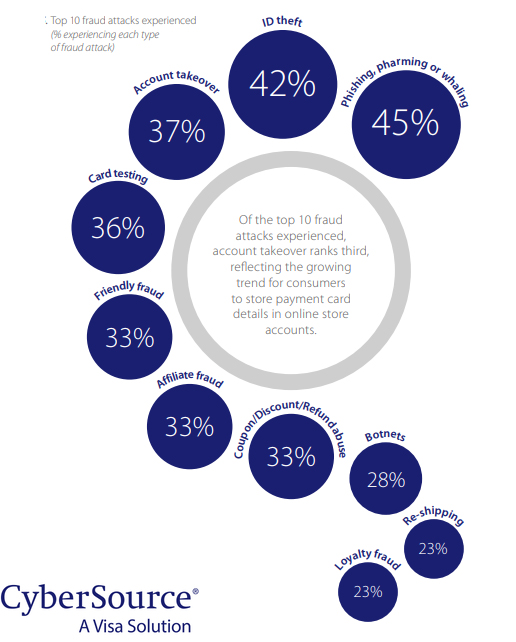The Global eCommerce Fraud Management “Masters of Balance” 2019 | CyberSource
E-Commerce & Retail | Global
Most e-commerce stores provide customers with accounts that store personal information, financial data and purchase history. Perpetrators often hack into these accounts through phishing schemes. In one of the most common tactics, fraudsters send emails to trick customers into revealing usernames and passwords. They then log into your customers’ accounts, change the passwords and make unauthorized purchases. The use of bots has also been used to obtain confidential information from customers.
This global report captures the views of nearly 2,800 fraud management specialists, representing organizations across 34 countries. Offering key insights and tips, it examines the characteristics of those organizations that place equal importance on all three areas of the fraud management balancing act.

A Figure Shows The Top 10 Fraud Attacks Experienced, 2019.
What’s in “The Global eCommerce Fraud Management 2019” Report:
- Executive summary.
- Managing fraud in a dynamic world.
- Lead with balance.
- The masters of balance.
- The effectiveness of fraud screening tools.
- Key performance indicators (KPIs).
- About this report.
Number of Pages:
- 37 Pages.
Pricing:
- Free.
Methodology:
Quantitative; 2,769 respondents comprising those who:
• Make or influence eCommerce fraud management decisions: 49%.
• Are involved in eCommerce fraud management: 51%.
Qualitative; 49 respondents across 15 markets participated in a post quantitative survey.







